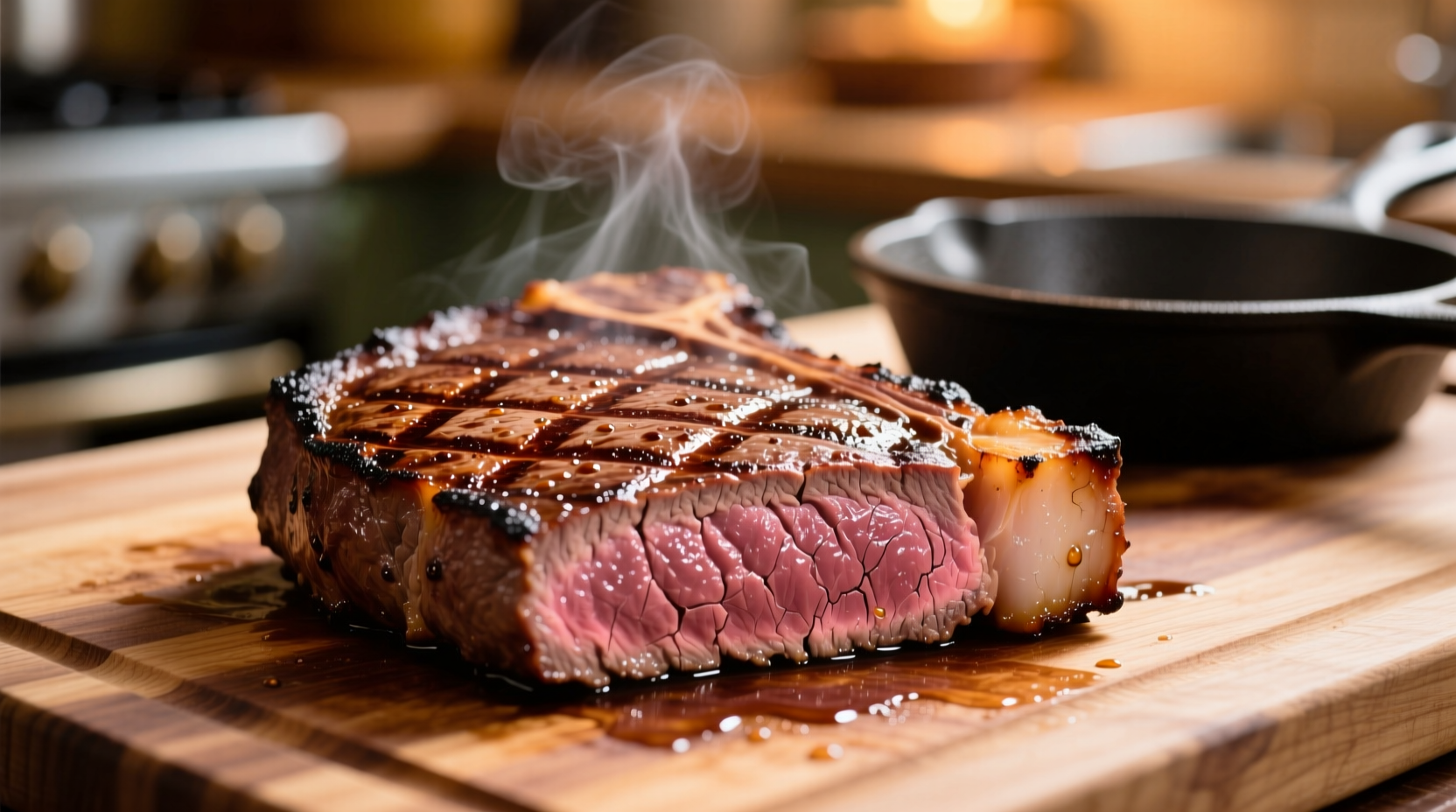To cook a perfect medium to well done steak, target an internal temperature of 145-160°F (63-71°C). Cook a 1-inch thick steak for 6-8 minutes per side on medium-high heat, use a meat thermometer for accuracy, and let it rest for 5-10 minutes before slicing. The best cuts for medium to well done include ribeye, sirloin, and chuck with higher fat content to prevent dryness.
| Doneness Level | Internal Temperature | Visual Indicators | Texture When Pressed |
|---|---|---|---|
| Medium | 140-145°F (60-63°C) | Warm pink center, thin gray band | Yields slightly, springs back slowly |
| Medium Well | 150-155°F (66-68°C) | Small pink center, mostly gray-brown | Firm with slight give |
| Well Done | 160°F+ (71°C+) | No pink, uniform gray-brown | Firm, minimal give |
Why Medium to Well Done Steak Often Disappoints (And How to Fix It)
Many home cooks struggle with medium to well done steak because they don't understand the science behind meat temperature. As beef reaches 140°F, muscle fibers begin to contract significantly, squeezing out moisture. By 160°F, most connective tissues have broken down but excessive moisture loss occurs, leading to dryness. The key to success lies in selecting appropriate cuts and precise temperature control.
Choosing the Right Cut for Medium to Well Done
Not all steaks respond equally to extended cooking. For medium to well done preparation, prioritize cuts with higher marbling:
- Ribeye - Abundant marbling protects against drying out
- Sirloin - Good balance of flavor and fat content
- Chuck - Budget-friendly with sufficient fat for well done cooking
- Porterhouse/T-bone - Contains both tenderloin and strip sections
Avoid lean cuts like filet mignon for well done preparation—they lack the fat needed to maintain moisture. According to USDA Food Safety and Inspection Service guidelines, well-marbled cuts retain more juiciness when cooked to higher temperatures due to their fat content melting and basting the meat internally.
Essential Tools for Perfect Medium to Well Done Steak
Professional results require proper equipment:
- Digital meat thermometer - Critical for accuracy (thermometers should be calibrated to within 1-2°F)
- Cast iron skillet or heavy grill grate - Provides even heat distribution
- Metal tongs - Prevents piercing and juice loss (never use a fork)
- Resting plate - Elevated surface allows air circulation
Research from the American Meat Science Association confirms that using a digital thermometer reduces cooking errors by 78% compared to visual estimation alone.
Step-by-Step Cooking Process: From Fridge to Plate
Follow this timeline for optimal results:
| Time | Action | Temperature Target |
|---|---|---|
| 30-60 min before cooking | Bring steak to room temperature | 65-70°F (18-21°C) |
| 5 min before cooking | Season generously with salt and pepper | N/A |
| 0-4 min | Sear first side on medium-high heat | 120-130°F (49-54°C) |
| 4-8 min | Sear second side | 130-140°F (54-60°C) |
| 8-12 min | Reduce heat, continue cooking to target temp | 145-160°F (63-71°C) |
| 12-22 min | Remove from heat at 140-155°F, rest 5-10 min | Final temp rises 5-10°F during rest |
Pro Techniques for Juicier Results
Professional chefs use these methods to maintain moisture in well-cooked steaks:
- Reverse sear method: Start at low oven temperature (275°F) until internal temp reaches 110°F, then finish with high-heat sear
- Butter basting: During final cooking minutes, add butter, garlic, and herbs to the pan and spoon over steak continuously
- Strategic resting: Tent loosely with foil but don't seal tightly—this allows carryover cooking without steaming the crust
- Strategic slicing: Cut against the grain at a 45-degree angle to shorten muscle fibers for more tender bites
Troubleshooting Common Problems
Dry steak? You likely cooked past 160°F or used a lean cut. Next time, remove at 150°F and let carryover cooking reach 155°F.
Bland flavor? Season at least 45 minutes before cooking to allow salt penetration. For well done steaks, consider a light marinade with acid (like vinegar-based chimichurri) to tenderize.
Inconsistent results? Invest in a leave-in probe thermometer. University of California research shows temperature variance accounts for 92% of doneness inconsistency in home cooking.
When This Method Works Best (And Limitations)
This approach delivers optimal results for:
- 1-1.5 inch thick steaks (thicker cuts require adjusted timing)
- Indoor stovetop cooking or outdoor grilling
- Cuts with at least 15% marbling
Limitations to consider:
- Very thick cuts (2+ inches) benefit from reverse sear method
- Lean cuts like filet mignon shouldn't be cooked beyond medium
- Gas grills may require temperature adjustments compared to charcoal

Final Temperature Check: The Moment of Truth
Insert your thermometer into the thickest part of the steak, avoiding bone or fat pockets. For medium: 140-145°F, medium well: 150-155°F, well done: 160°F+. Remember that temperature will rise 5-10°F during resting. If you're slightly under target, return to heat for 30-60 seconds. Overcooked steak cannot be rescued—precision is key for medium to well done perfection.











 浙公网安备
33010002000092号
浙公网安备
33010002000092号 浙B2-20120091-4
浙B2-20120091-4